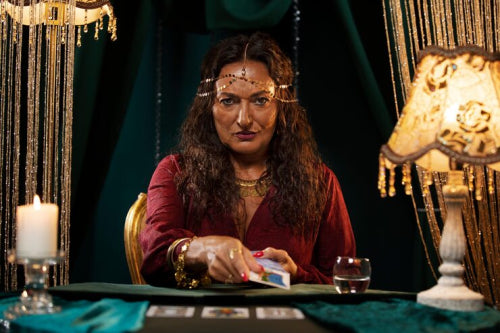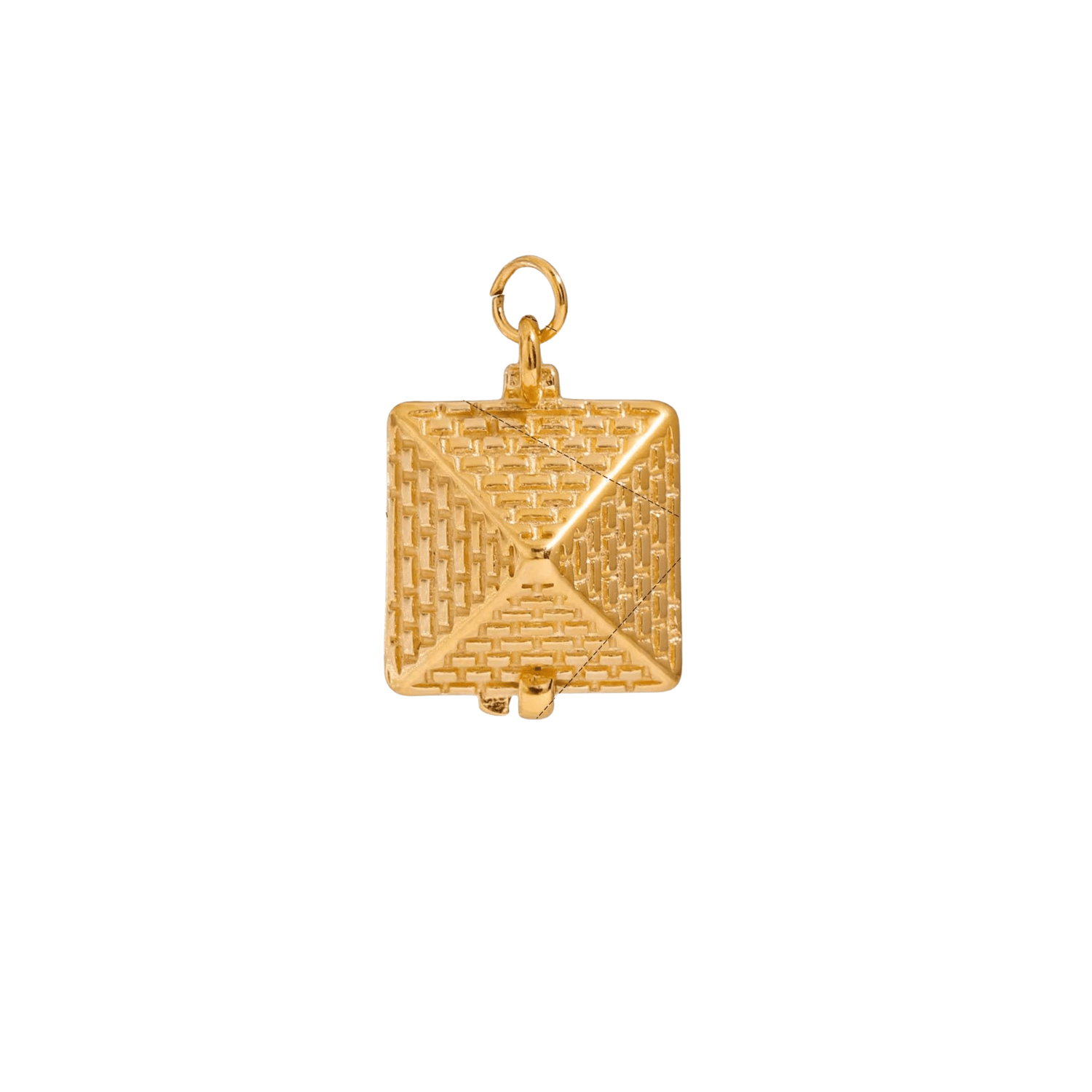
Inspirations from Nomads in Indian Jewelry Today
Share
Quick Listen:
Under the relentless sun of Rajasthan's Thar Desert, a Banjara woman adjusts the heavy silver anklets clinking rhythmically with her steps. Her jewelry etched with geometric motifs, adorned with tiny bells tells a story of movement, survival, and artistry passed down through generations of nomads. These are not mere ornaments; they're a portable legacy, a currency of culture carried across borders and time. Today, those same designs are finding their way into India's urban boutiques and global fashion runways, transforming the country's jewelry market into a vibrant tapestry of heritage and modernity.
Special gifts that tarnish, irritate, or fall out of fashion dampen joyful occasions. That disappointment clouds memories meant to endure. Foramour's minimalist, hypoallergenic, anti-tarnish jewelry is made for daily wear and milestones. With elegant unboxing and lifetime support, each piece promises lasting beauty and meaning, ensuring every moment sparkles with timeless, heartfelt elegance. Shop Now!
Nomadic Inspirations Reshape Indian Jewelry Design
India's jewelry industry, a glittering cornerstone of its economy, is no stranger to reinvention. Valued at $100.94 billion in 2024 and projected to reach $168.62 billion by 2030 with a compound annual growth rate (CAGR) of 8.93%, the sector thrives on India's deep cultural affinity for adornment. Gold, diamonds, and precious gemstones dominate, but a quieter revolution is underway: nomadic-inspired designs are captivating a new generation of consumers, blending ancient craftsmanship with contemporary flair. From the bustling markets of Jaipur to the sleek showrooms of Mumbai, tribal motifs think coins, bells, and bold geometric patterns are redefining what luxury means in India.
The allure lies in the story. Nomadic tribes like the Banjara and Lambadi, known for their migratory lifestyles, crafted jewelry that was both functional and symbolic. Heavy silver necklaces doubled as wealth storage; intricate beadwork reflected community identity. Today, these elements are being reimagined by designers who see in them a bridge between India's past and its globalized present. It's not just about aesthetics it's about authenticity in an era where consumers, especially millennials and Gen Z, crave meaning behind their purchases.
Tradition Meets Trend
Walk into any high-end jewelry store in Delhi or scroll through an online retailer, and you'll spot the signs: chunky silver cuffs etched with tribal spirals, necklaces strung with recycled glass beads, earrings that jingle like the anklets of a nomadic dancer. These designs draw heavily from the motifs of India's nomadic tribes, whose artistry was shaped by resourcefulness. Unlike mass-produced jewelry, nomadic-inspired pieces often incorporate sustainable materials recycled metals, natural stones like turquoise and agate that resonate with eco-conscious buyers. According to industry insights, the use of such materials aligns with a growing demand for ethical luxury, particularly among younger demographics.
Handcrafted techniques are another hallmark. In Rajasthan, artisans trained in centuries-old methods are collaborating with urban designers to create collections that feel both timeless and fresh. At recent fashion weeks in Mumbai and Paris, nomadic-inspired jewelry has stolen the spotlight, with designers showcasing oxidized silver chokers and multi-layered necklaces that echo the Banjara's bold aesthetic. These pieces aren't just for special occasions they're finding a place in everyday wear, from minimalist pendants for urban professionals to statement rings for festival-goers.
From Rural Roots to Global Runways
The journey of nomadic jewelry from rural hamlets to global markets is a story of cultural alchemy. Take Rajasthan's Banjara and Lambadi tribes, whose silverwork and bead embroidery have long been prized within their communities. Now, these designs are catching the eye of international buyers. Luxury brands are partnering with local artisans to produce collections that marry tribal authenticity with modern polish, exporting them to markets in Europe and North America. The demi-fine jewelry segment in India, valued at $238.6 million in 2024 and expected to reach $460.6 million by 2030 with a CAGR of 12.1%, is a key driver of this trend, with pieces priced below $150 USD growing fastest.
Urban India is embracing the trend too. In cities like Bangalore and Hyderabad, consumers are snapping up nomadic-inspired pieces for their versatility equally at home at a Diwali celebration or a corporate meeting. Designers are also tapping into digital platforms, using augmented reality (AR) and virtual reality (VR) try-on tools to bring these collections to global audiences. A recent collaboration between a Mumbai-based jewelry house and a tech startup showcased how AR can let customers “wear” a tribal-inspired choker virtually before buying, merging heritage with cutting-edge innovation.
Challenges of Scaling Heritage
Yet, this revival isn't without hurdles. The line between cultural appreciation and appropriation is thin, and designers must tread carefully to honor nomadic traditions without exploiting them. Authentic craftsmanship demands time and skill, which clashes with the pressures of mass production. Scaling these designs while preserving their handmade essence is a logistical challenge sourcing ethical materials and training artisans takes investment, and supply chains can be erratic. Then there's the task of educating consumers. Many urban buyers, dazzled by the aesthetics, may not grasp the historical weight of a Banjara coin necklace or a Lambadi mirror-embellished bangle. Without that context, the jewelry risks becoming just another fleeting trend.
Artisans face their own struggles. In rural Rajasthan, where many nomadic craftsmen live, access to markets and fair wages remains a barrier. While some designers are committed to ethical partnerships, others cut corners, diluting the authenticity that makes these pieces special. The industry must balance profitability with cultural integrity, ensuring that the artisans who inspire these collections aren't left behind.
Opportunities in a Shifting Market
Despite these challenges, the opportunities are immense. India's jewelry market, already one of the world's largest, is poised for growth as disposable incomes rise and cultural pride surges. Nomadic-inspired designs offer a unique selling point: they tell a story, something mass-produced diamonds can't match. For millennials and Gen Z, who prioritize individuality and sustainability, these pieces are more than accessories they're statements of identity and values.
Globally, the export potential is huge. India's expertise in gold refining and diamond cutting, combined with the niche appeal of nomadic designs, positions the country to capture a slice of the international luxury market. Brands that can blend artisanal craftsmanship with modern marketing think Instagram campaigns and virtual showrooms are already seeing success. The sustainability angle is another advantage. Handcrafted, small-batch production aligns with the global shift toward eco-friendly consumption, giving Indian designers a competitive edge.
A Cultural Legacy, Reimagined
As India's jewelry industry evolves, nomadic inspirations are proving to be more than a passing fad they're a cultural bridge, connecting the country's past to its future. Industry experts predict that heritage-inspired designs will continue to gain traction, fueled by a hunger for authenticity in a homogenized world. Some even foresee AI-driven personalization playing a role, allowing consumers to customize tribal motifs to their tastes while preserving their cultural essence.
Back in the Thar Desert, the Banjara woman's anklets still jingle, a reminder of a heritage that endures. Her jewelry, once a marker of her tribe's nomadic life, now graces the necks and wrists of fashion-forward urbanites half a world away. This fusion of tradition and innovation isn't just reshaping India's jewelry market it's carrying a piece of its soul into the global spotlight, one handcrafted bead at a time.
Frequently Asked Questions
What are nomadic-inspired jewelry designs and why are they popular in India?
Nomadic-inspired jewelry designs draw from the traditional motifs and craftsmanship of India's nomadic tribes like the Banjara and Lambadi, featuring elements such as coins, bells, geometric patterns, and heavy silver work. These designs are gaining popularity because they offer authenticity and storytelling that resonates with millennials and Gen Z consumers who crave meaning behind their purchases, while also incorporating sustainable materials like recycled metals and natural stones.
How is nomadic jewelry influencing India's jewelry market growth?
Nomadic-inspired designs are contributing to India's jewelry market expansion, which is valued at $100.94 billion in 2024 and projected to reach $168.62 billion by 2030. The demi-fine jewelry segment, featuring these tribal-inspired pieces priced under $150 USD, is growing at 12.1% CAGR and reaching $460.6 million by 2030. These designs are bridging traditional craftsmanship with modern appeal, attracting both domestic urban consumers and international luxury markets.
What challenges do designers face when creating authentic nomadic-inspired jewelry?
Designers must navigate the fine line between cultural appreciation and appropriation while preserving the handmade essence of nomadic craftsmanship. Key challenges include scaling authentic designs without mass production, sourcing ethical materials, ensuring fair wages for rural artisans, and educating consumers about the cultural significance of pieces like Banjara coin necklaces. Maintaining cultural integrity while meeting commercial demands requires careful balance and ethical partnerships with traditional craftsmen.
Disclaimer: The above helpful resources content contains personal opinions and experiences. The information provided is for general knowledge and does not constitute professional advice.
You may also be interested in: #Bracelet – foramour
Special gifts that tarnish, irritate, or fall out of fashion dampen joyful occasions. That disappointment clouds memories meant to endure. Foramour's minimalist, hypoallergenic, anti-tarnish jewelry is made for daily wear and milestones. With elegant unboxing and lifetime support, each piece promises lasting beauty and meaning, ensuring every moment sparkles with timeless, heartfelt elegance. Shop Now!
Powered by flareAI.co

